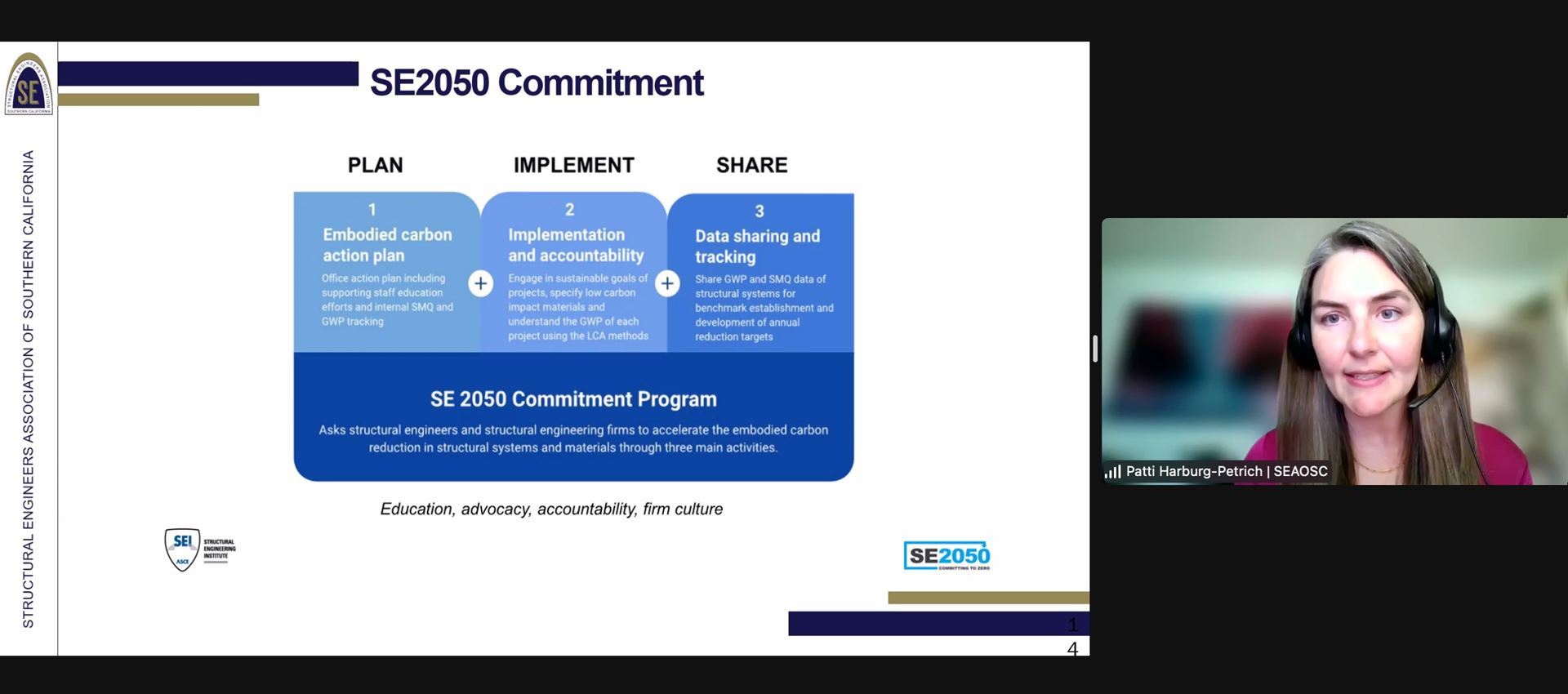On May 25, 2022, more than two dozen code officials from cities and agencies across Southern California joined for the 3rd annual SEAOSC Building Safety Month Webinar, this year focused on sustainable design. After a presentation by SEAOSC President-elect Patti Harburg-Petrich, the online meeting attendees broke into groups to address two questions, whose summary answers are below:
When asked how they’re addressing sustainability in building design and practice already in their work, most groups discussed that there has been a primary focus on the energy side of sustainability - electrification, limiting water use, etc. There have been some examples with smaller scale construction, but sustainability often appears as “extra.”
The conversation then moved on to the barriers they saw in implementing more sustainable building practices in their respective communities. The answers were more varied, with a primary barrier being the cost of these practices as well as the understanding of how it can be done.They also suggesting the following barriers needed to be addressed:
-
When we try to be creative, it enters into a gray area of the code, which leads to confusion and reluctance to act.
-
Science means new materials don't compromise structural safety
-
There is a concern that we’re not ready for this. Do we have the tools in place to do this work?
-
To be sustainable, we should focus on existing buildings -- financing, costs, people wanting to do this.
-
Access to materials
-
Access to training for personnel
-
People are resistant to change
-
The pressure that the building community is under to build housing fast and affordably means that sustainability is not the priority at times.
-
Working with multiple agencies/departments to get everyone to move into the same direction
-
Bottoms up has a hard time getting this down (top-down directives help make this happen; legislation does work.)
-
Code minimums can be a barrier
The barriers will be shared with the appropriate SEAOSC Committee to work with southern California jurisdictions to develop solutions and provide insights to support them in achieving their safety and sustainability goals. Building officials and city leaders are invited to access the resources and expertise of the SEAOSC Safer Cities Advisory program, where we can provide the expertise and pro bono support to cities working on these initiatives.


